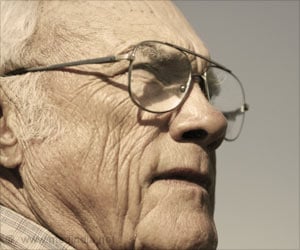Proteins in the biological fluid surrounding the target cell when combined with a virus can make it more infectious. The virus may also accelerate the threadlike amyloid fibrils formation that plays a part in Alzheimer's disease.

‘Amyloid proteins aggregate into plaques and play a part in Alzheimer's disease where they may lead to neuronal cell death.’
Read More..




Viruses can only reproduce inside living cells and exploit the cellular machinery of their host to their benefit. However, before entering a host cell, viruses are just nanometer-sized particles, very similar to artificial nanoparticles used in medical applications for diagnosis and therapy. Read More..
Scientists from Stockholm University and Karolinska Institutet have found that viruses and nanoparticles share another important property; they both become covered by a layer of proteins when they encounter the biological fluids of their host before they find their target cell. This layer of proteins on the surface influence their biological activity significantly.
"Imagine a tennis ball falling into a bowl of milk and cereals. The sticky particles in the mix immediately cover the ball, and they remain on the ball when you take it out of the bowl. The same thing happens when a virus gets in contact with blood or lung fluids that contain thousands of proteins. Many of these proteins immediately stick to the viral surface forming a so-called protein corona", Kariem Ezzat of Stockholm University and Karolinska Institutet explains.
Kariem Ezzat and his colleagues studied the protein corona of respiratory syncytial virus (RSV) in different biological fluids. RSV is the most common cause of acute lower respiratory tract infections in young children worldwide, leading up to 34 million cases and 196,000 fatalities each year.
"The protein corona signature of RSV in the blood is very different from that in lung fluids. It is also different between humans and other species such as rhesus macaque monkeys, which also can be infected with RSV", Kariem Ezzat says.
Advertisement
The researchers from Stockholm University and Karolinska Institutet have also found that viruses such as RSV and herpes simplex virus type 1 (HSV-1) can bind a special class of proteins called amyloid proteins.
Advertisement
"The novel mechanisms described in our paper can have an impact not only on understanding new factors determining how infectious a virus is but also on devising new ways to design vaccines. Also, describing a physical mechanism that links viral and amyloid causes of disease adds weight to the increasing research interest in the role of microbes in neurodegenerative disorders such as Alzheimer's disease and opens up new avenues for treatments.", Kariem Ezzat of Stockholm University and Karolinska Institutet says.
Source-Eurekalert










